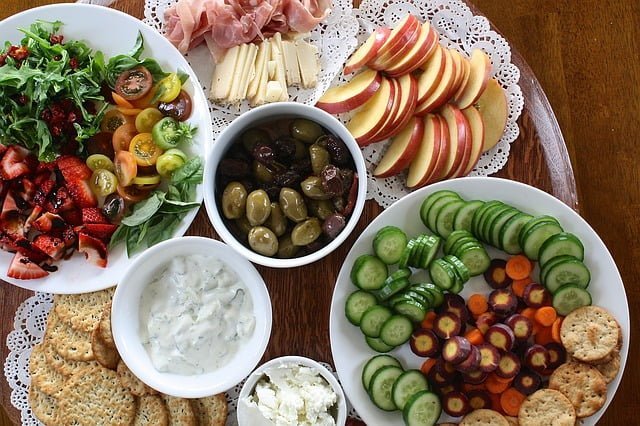
Eat vegetables and fruits
Fruits and vegetables are good for you
Vegetables and fruits are an important part of a healthy eating pattern. Eating a variety of vegetables and fruits may reduce the risk of heart disease
Vegetables and fruits contain important nutrients such as:
- the basic
- vitamins
- metal
Include plenty of vegetables and fruits in your meals and snacks. Try to make half of your plate of vegetables and fruits.
Choose different textures, colors and shapes to suit your taste. From apples to zucchini, choose plenty of vegetables and fruits.
Try a variety of vegetables and fruits such as:
- pear
- An apple
- berries
- Broccoli
- peach
- cabbage
- leafy vegetables
Fruit juice concentrates and fruit juice are rich in sugars. Replace the juice with water. Choose whole or chopped vegetables and fruits instead of juice.
Choosing and preparing healthy vegetables and fruits
Fresh, frozen, or canned vegetables and fruits can be healthy options.
Frozen and canned vegetables and fruits:
- It takes a little time to prepare
- It is a healthy and convenient option
- Just as nutritious as fresh vegetables and fruits
Frozen vegetables and fruits
Choose frozen vegetables and fruits without:
- Added sugars
- add seasoning
- Rich bread or sauces
You can add frozen vegetables and fruits to soups or chili.
Canned vegetables and fruits
Choose canned vegetables with little or no sodium.
Drain and rinse canned vegetables to reduce the sodium content in them.
Choose canned fruit with few added sugars.
Use food labels to help you compare canned vegetables and fruits.
The daily percentage helps you see if a food contains a few or a lot of nutrients.
dried fruit
Dried fruit can be part of healthy eating, but it can stick to your teeth and cause tooth decay. If you choose dried fruit, eat it with meals.
Prepare vegetables
Try healthy cooking methods such as:
- the bread
- roasting
- steaming
- fast frying
Enhance the flavor by adding:
- olive oil
- Lemon juice
- flavored vinegar
- Fresh or dried herbs or spices
Snack ideas
Vegetables and fruits are quick and healthy snacks. There is a lot to choose from and many healthy ways to prepare them.
Tips for eating vegetable snacks
Keep shredded fresh veggies in the fridge for a quick and healthy snack. Attempt:
- Broccoli
- cauliflower
- carrot sticks
- celery sticks
- cucumber slices
Tips for eating fruit snacks
Keep a bowl of fresh fruit on the counter as an easy-to-grab snack.
Add fruit to whole grain or low-fat yogurt. Attempt:
- banana
- mango
- frozen berries
- Canned peaches packed in water
Freeze the seedless grapes on a tray and enjoy as a snack.
How to eat more vegetables
Here are some easy ways to eat more vegetables:
- Add canned pumpkin or squash puree to any soup to make it rich and creamy.
- Wash and chop any excess vegetables and put them in the fridge or freeze when you prepare meals so you have more for the next day’s meals.
- Use prepackaged vegetables that can be added to salads, stir-fries, or casseroles. Attempt:
- little carrots
- green beans
- leafy vegetables
- Serve raw vegetables with your meals. Attempt:
- Option
- Cherry tomatoes or grapes
- Red, yellow or green peppers
- Try new recipes that call for different types of leafy greens such as:
- cabbage
- spinach
- bok choy
- Swiss chard
- Mixed vegetable salad
How to eat more fruit
Fruits are a delicious addition to your day. Here are some easy ways to eat more fruit:
- For dessert, choose:
- orange
- Fruit salad, with little added sugar
- Add fresh fruits to salads. Try adding slides:
- pear
- peach
- Strawberry
- Add frozen fruits to baking.
- Wash and chop excess fruit and put it in the fridge so you can have it on hand for meals and snacks.
Make a healthy choice
What you eat on a regular basis is important to your health.
- Choose foods with little or no sodium, sugar, or saturated fat.
- Compare the Nutrition Facts table to foods to choose products that are lower in sodium, sugar or saturated fat.



